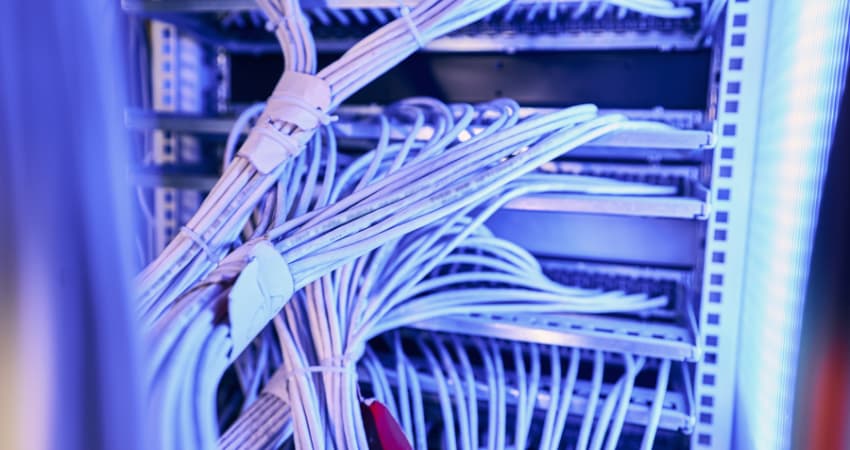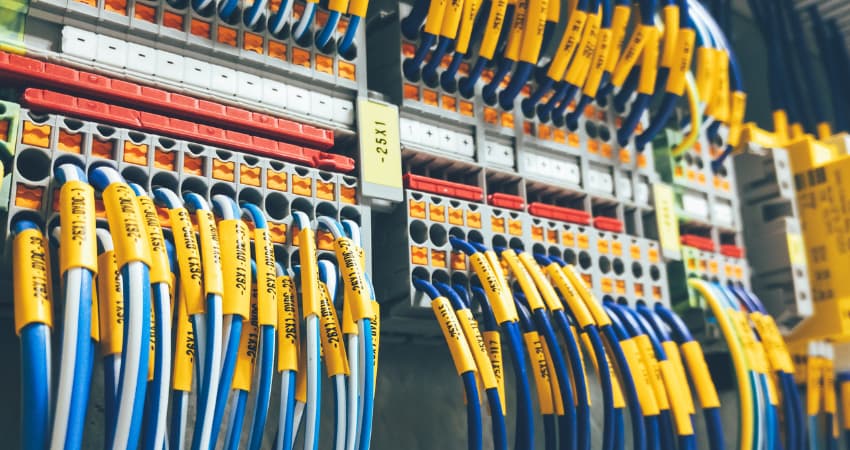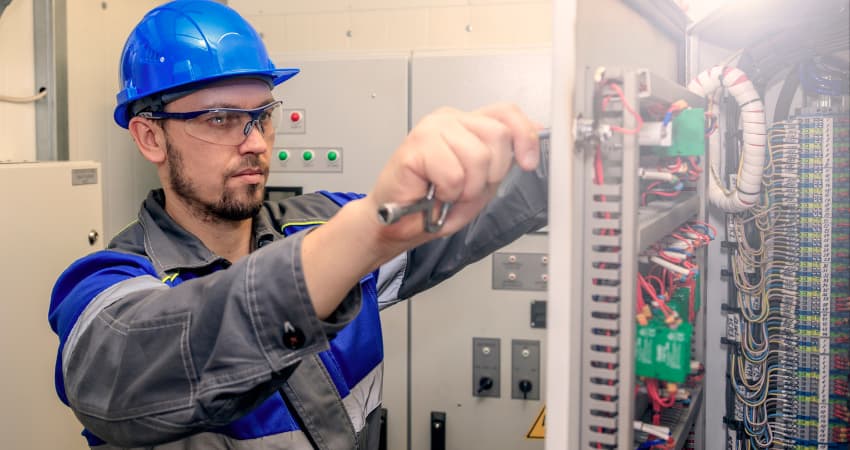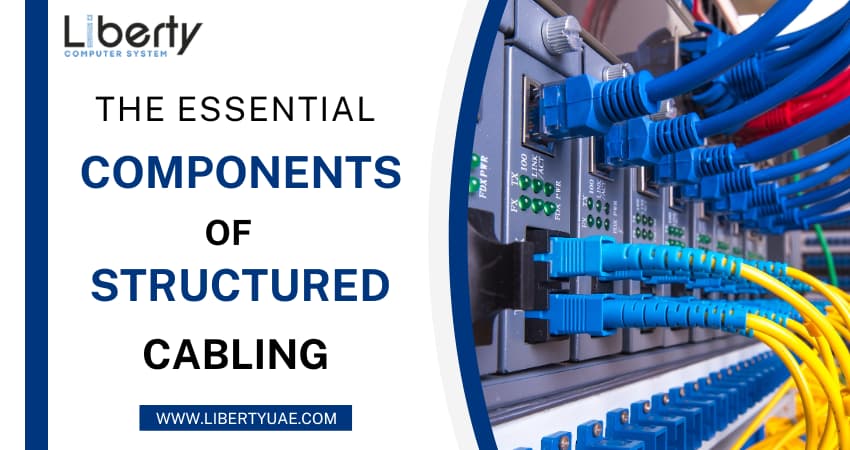When following various cabling catalogs, one encounters an excess of components designed for use in structured network cabling systems. Amidst the technical vocabulary, terms such as patch cabling and raceways often stand out. Understanding the significance of these terms and the roles these diverse components of structured cabling play is vital when establishing structured network systems. Here, we’ve highlighted some key components frequently employed in the design and installation of network cabling systems for a clearer grasp of their functions.
Table of Contents
What is a Structured Cabling System?

A structured cabling system is a comprehensive and organized infrastructure that supports the transmission of data, voice, and video signals within a building or campus. It serves as the backbone for all information and communication technology (ICT) networks, providing a standardized and scalable approach to cabling.
The primary goal of a structured cabling system is to create a unified and cohesive network that accommodates various technologies and can easily adapt to changes or upgrades. It typically involves the installation of standardized cabling and connectivity products, such as twisted pair copper cabling, fiber optic cabling, and connecting hardware, all organized in a hierarchical and structured manner.
Structured cabling offers several advantages, including flexibility, scalability, and ease of management. It simplifies the integration of diverse systems, reduces downtime during maintenance or upgrades, and supports the efficient use of resources. As a result, structured cabling systems have become the standard for modern information and communication networks in residential, commercial, and industrial environments.
Why is Structured Cabling Important?

Structured cabling is crucial for several reasons, serving as the basis for effective and trusted communication networks within organizations. Here are key reasons highlighting the importance of structured cabling –
1. Centralized Infrastructure
Structured cabling provides a centralized and organized infrastructure, reducing the complexity of managing multiple, disparate cabling systems. This simplifies troubleshooting, maintenance, and future expansions.
2. Flexibility and Scalability
Structured cabling allows for easy modifications and additions to the network. As businesses evolve and technology advances, a well-structured cabling system can accommodate changes without requiring a complete overhaul.
3. Ease of Troubleshooting
The structured nature of cabling systems facilitates rapid identification and resolution of issues. Clear labeling and organization reduce downtime by streamlining the troubleshooting process.
4. Higher Bandwidth and Performance
Structured cabling, especially using fiber optics, supports higher bandwidths and data transmission speeds. This is essential for handling increasing data demands, and facilitating smooth and efficient network operations.
5. Cost-Effectiveness
While the starting installation expense may be more elevated, structured cabling provides a cost-effective solution in the long run. Its adaptability and ease of maintenance result in lower operational costs and a better return on investment over time.
6. Future-Proofing
Structured cabling systems are created to support various technologies and applications. This future-proofing ensures that the infrastructure can adjust to increasing technologies without the necessity for extensive upgrades.
7. Improved Reliability
With a well-designed structured cabling system, the risk of network downtime due to connectivity issues is significantly reduced. This improved trustworthiness is vital for corporations that trust heavily in constant network operations.
8. Consistency and Standards
Structured cabling follows standardized industry practices and guidelines. This adherence to standards ensures compatibility with a wide range of equipment and technologies, fostering interoperability and consistency.
List of The Vital Components of Structured Cabling

1. Entrance Facilities
Entrance Facilities represent the point of entry for external cabling into a building or facility. This includes connections from internet service providers or telephone lines.
The primary purpose of Entrance Facilities is to establish a secure and weather-protected entry point for external cabling. It provides a transition from outdoor to indoor cabling and is equipped with infrastructure to safeguard the building from environmental elements. This component ensures the initial connectivity between external networks and the internal cabling system.
2. Equipment Room
The Equipment Room is a central space within a building that houses active network equipment such as servers, switches, and routers. It functions as a distribution point for cabling pathways.
Serving as the nerve center of the network, the Equipment Room consolidates essential networking equipment. This centralized location simplifies the management and maintenance of active devices, allowing for efficient troubleshooting, upgrades, and overall control of the network infrastructure.
3. Backbone Cabling
Backbone Cabling refers to the high-capacity cabling that connects entrance facilities, equipment rooms, and telecommunication rooms. It establishes the main data highways of the network.
Backbone Cabling forms the core structure of the network, ensuring seamless data transmission between distinct spots of a building or campus. By providing high-bandwidth connectivity, it supports the overall network architecture, enabling efficient communication between major network components.
4. Telecommunication Room
Telecommunication Rooms, also known as Intermediate Distribution Frames (IDFs), are distributed throughout a facility and serve as intermediate connection points for backbone and horizontal cabling.
These rooms play a pivotal role in connecting backbone cabling to horizontal cabling. They house network equipment and distribution panels, facilitating the efficient distribution of data to various sections of the building or specific floors. Telecommunication Rooms contribute to the overall organization and management of the cabling infrastructure.
5. Horizontal Cabling
Horizontal Cabling is the system that connects the telecommunications room to individual workstations and devices within a specific area or floor.
As the final link between network equipment and end-user devices, horizontal cabling ensures that individual workstations, computers, phones, and other devices have connectivity. It is often routed through conduits, cable trays, or floor ducts to provide flexibility and accessibility, enabling seamless communication within a designated space.
6. Work Area
The Work Area is the physical space where end-user devices are connected to the horizontal cabling system. This includes individual offices, cubicles, or open workspaces.
The Work Area represents the endpoint where users interact with the network. It encompasses the physical locations where devices connect to the cabling system, facilitating communication with the broader network infrastructure. The design and implementation of the Work Area are crucial for providing efficient and reliable connectivity to end-users.
Conclusion
Structured cabling forms the backbone of modern information and communication networks, and understanding its essential components is vital for designing and implementing efficient and future-proof systems. As organizations increasingly rely on high-speed connectivity, components of structured cabling network solutions have become involved in meeting these demands.
Each of these major components plays a vital part in the design and operation of a structured cabling system. From the secure entry point of Entrance Facilities to the end-user interaction in the Work Area, these components provided by Liberty Computer Systems, work together to create a well-organized, scalable, and efficient network infrastructure within a building or campus. Understanding their roles is fundamental for professionals involved in designing, implementing, and maintaining structured cabling systems.
Read Blog: Guide to Migration From SQL Server to Azure SQL Database




.png)


